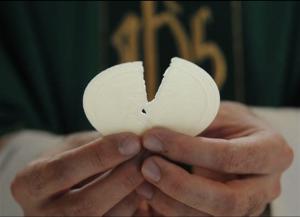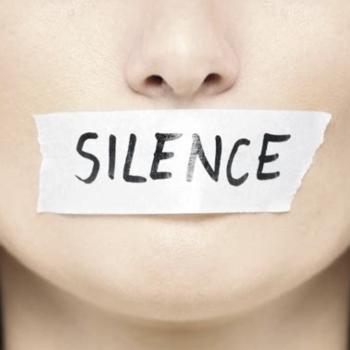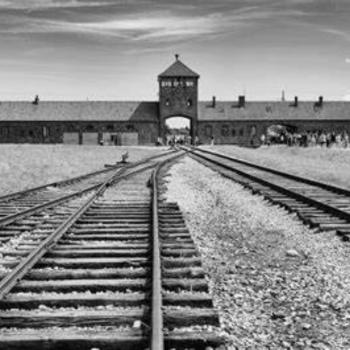When I was a child, we attended Mass at a Dominican convent the next town to the North. The nuns had a different visiting priest almost every week; they came from all over, and brought with them many different traditions, cultures, and approaches to Mass. Two things were always the same: Sister Suzy’s painful organ playing, and the pure white, perfectly round communion wafers, each stamped with a cross.
Then, one week when I was about 12, we met Father Jose (not his real name, which I frankly don’t remember). Father Jose wore exuberantly colored vestments with intricate embroidery. He had a thick accent I couldn’t place, which made it interesting to listen to his homily (I have no idea what he said; I was just intrigued by the way he rolled his R’s and I tried to practice the motion silently along with him). He was young and handsome, with a thick head of curly hair and a dark complexion.
And the communion wafers were different.
Instead of round, they were vaguely square and all a little different. Instead of flat they were thick. And instead of purest white, they were a deep brown with nothing emblazoned on them. They were, in all honesty, comparatively quite tasty.
All through Mass my mother wore a frown. My brothers and I knew we were in for an earful at brunch after Mass, and we weren’t disappointed.
“Such garish, distracting vestments!”
“I thought they were pretty,” I whispered.
“He rambled on and on.”
“I liked his voice,” I whispered.
“And whatever those were that he passed off as communion wafers!”
“They tasted like meat!” I shouted.
Dead silence.
Then, very quietly, “They most. Certainly. Did. NOT.”
I have no idea what my mother had against Father Jose. We’d had other Hispanic priests; that wasn’t it. He very well may have said something completely off-the-wall heretical during his sermon that went over my 12-year-old R-rolling head. What I do know is that we did not feel like the Body of Christ, Corpus Christi. We were all supposed to be “One Bread, One Body.” But everything from that very bread to the priest’s frock was causing dissension.
This was not peculiar to my mother, nor to the early ‘80s. There is great division in the Body of Christ—not just between Catholics and Protestants, but within the Roman Catholic Church itself. We each stand in line to solemnly process toward the altar and receive identical cross-stamped circles of purest white, yet in our hearts we are debating who among us shouldn’t be allowed to receive Communion at all, who has the right to call themselves Catholic, who should be allowed to give a homily. The industrial sameness of each host belies the furrows and rifts that run through us like our very veins. It’s as though the Body of Christ itself has been drawn and quartered.
On this Feast of Corpus Christi, I cannot help but wish I could experience that first Eucharist, to be just as confused and gobsmacked by Jesus’ words as the person sitting next to me. To receive bread passed to me, break off a chunk, and pass it along to my neighbor, fingers brushing. To sink my teeth in, perhaps dropping a crumb on the table. To look upon Jesus as I do so, and see the very body I devour, likely covered in dust and smelling of sweat and fish. To know that what we are sharing is secret and special, and at once commanded to be repeated through all time and space.
I understand that we wear our Sunday Best to Mass because it’s a statement of its relative importance to us. I understand that care and thought and debate has been put into every detail of the liturgy over the course of centuries because receiving Christ is one of the most important things we can do. But when these things do more to divide us than unite us, I am left longing for dusty-handed gobsmacked fishermen and the simplicity of taking a bite of shared bread.












